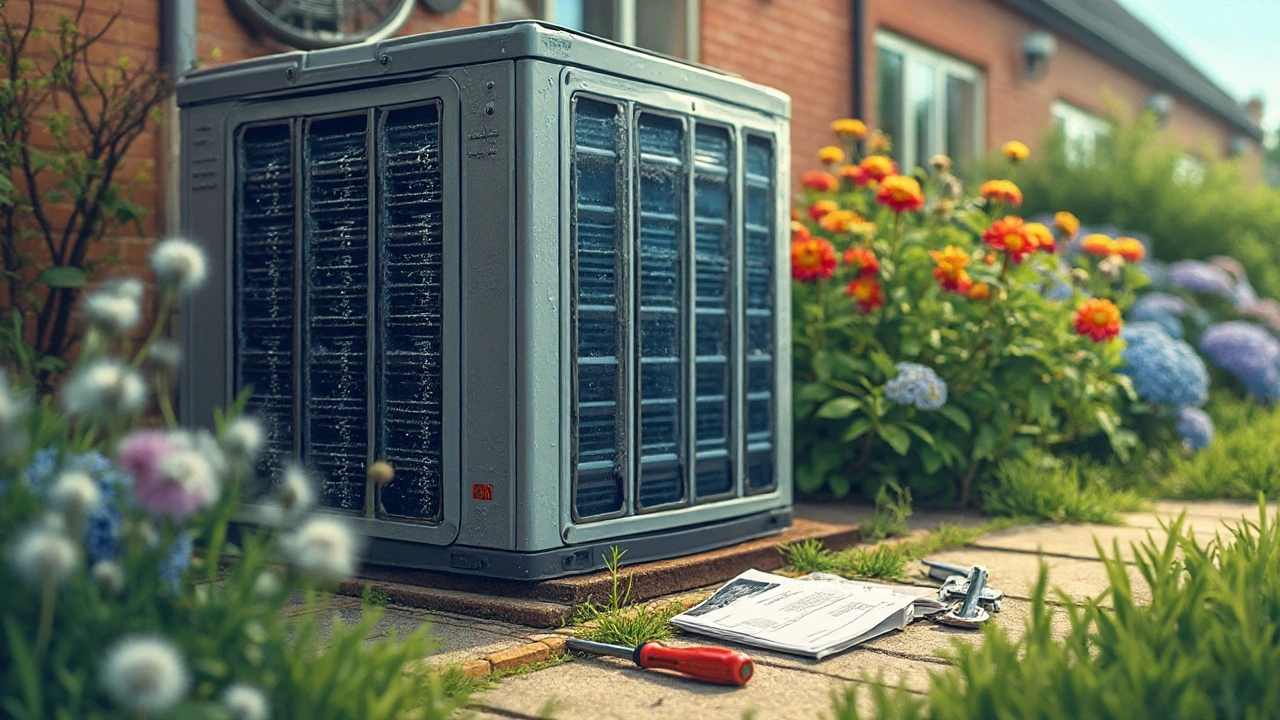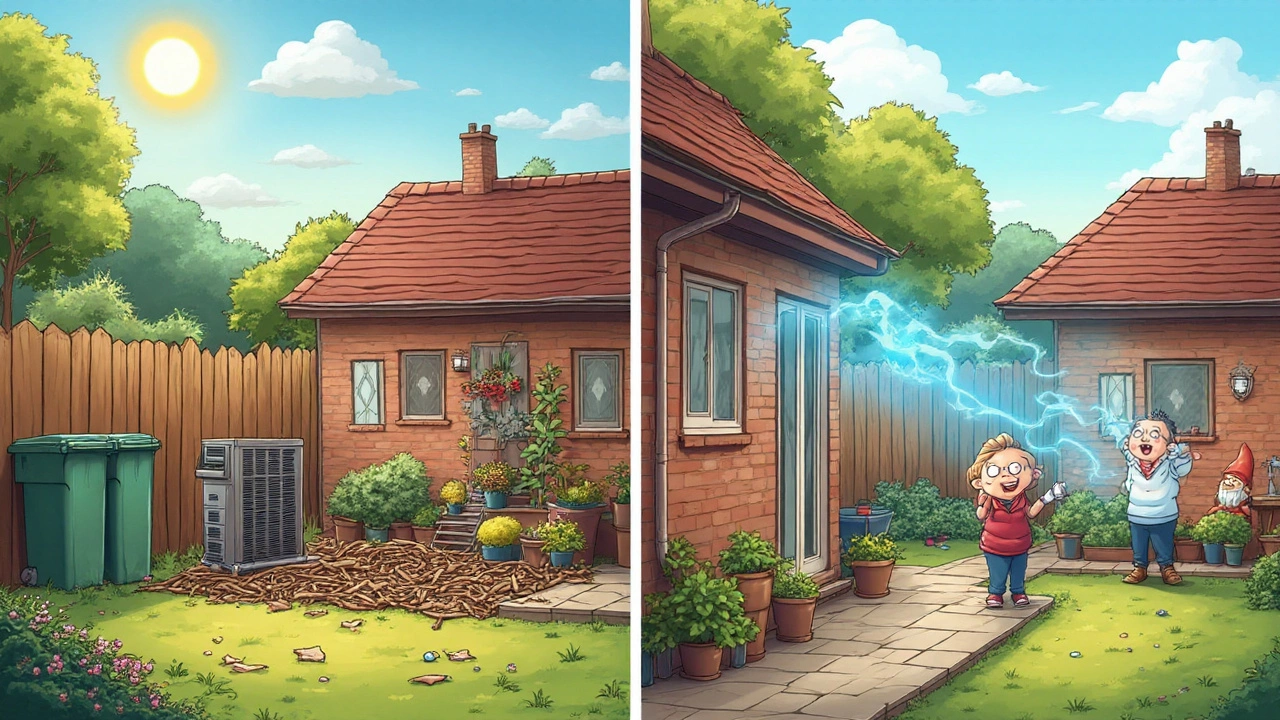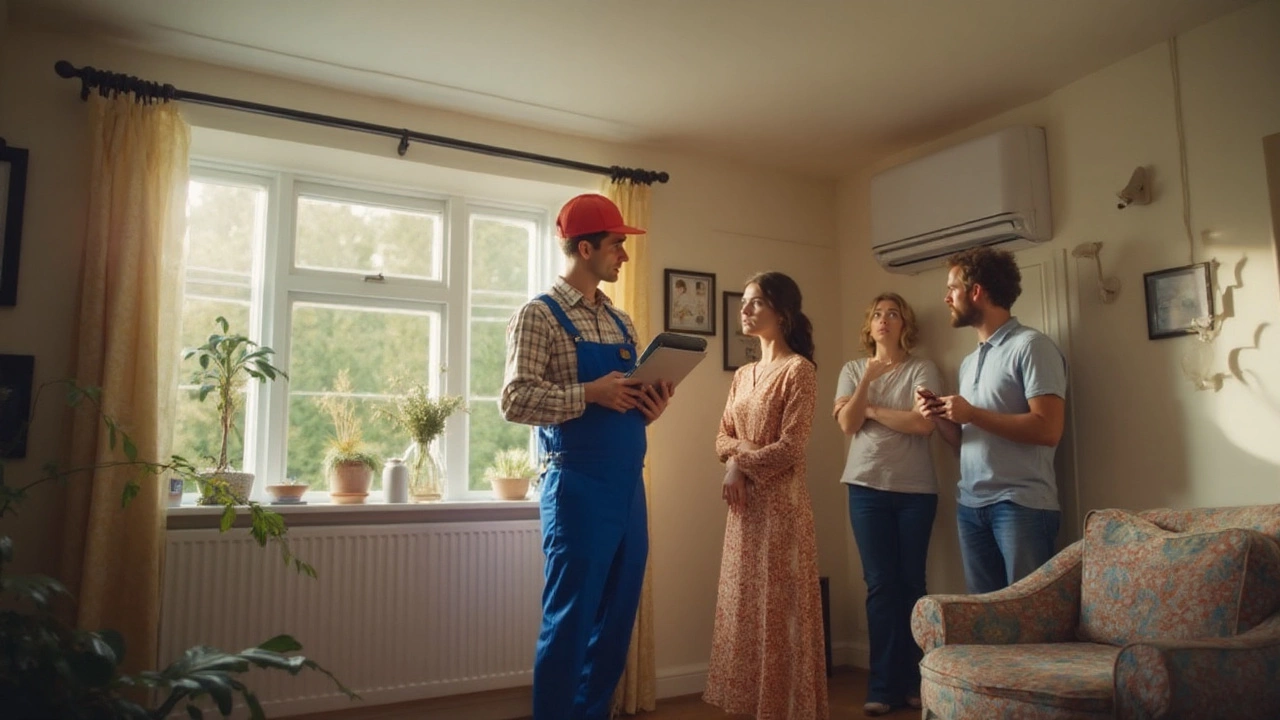Ever felt like your heat pump just gave up on the whole idea of cooling your home, yet hums along as if nothing's wrong? You're standing by the vent, expecting cold relief, but it's just pushing out lukewarm air. Super annoying, right? If you've typed in "heat pump running but not cooling" (probably sweating a bit), you're in good company—this trouble spikes every summer, especially as systems age or when heatwaves crank up. Let's pull the curtain back on why this happens, what it means, and what you can do to stay cool without panicking (or calling in a pro before you even check the basics).
Main Culprits Behind a Heat Pump That Runs But Won’t Cool
Don’t let the mystery of a stubborn heat pump drive you bananas—there’s almost always a logical reason hiding in plain sight. The number-one offender? Believe it or not, a clogged or dirty air filter. Airflow gets blocked, and suddenly your system can’t do its job. But air filter issues are just the tip of the iceberg. If you’re skipping routine checks, you’re practically inviting issues inside.
Low refrigerant levels are another major headache. Your heat pump needs refrigerant to actually move heat around. If it leaks out (and it does happen over time—especially for systems running older R22 or even the now-popular R410A), your pump will run but can’t chill the air. According to the U.S. Department of Energy, nearly 50% of all HVAC calls in summer tie back to refrigerant shortages or leaks. That’s no small number.
Then there’s the outdoor condenser unit. If debris—like leaves, grass clippings, or that plastic bag from last week’s cookout—gets caught in there, your system overheats and stops cooling. Something as innocent as a dirty coil can hike your power bill by 30% and deliver only lukewarm air. No kidding: the National Association of Home Builders ran tests showing heat pumps with blocked coils refrigerate 36% less efficiently. That adds up fast on hot days.
Here’s another hidden issue: thermostat glitches. They’re sneaky, especially if someone’s messed with settings or if batteries are low. If your thermostat's reading room temperature wrong, your pump won’t know when to really start cooling. Sometimes it’s just a weird schedule or a “Mode” set to “Heat” instead of “Cool.” Simple but easy to overlook.
Chances are, if your heat pump is running but not cooling, one of these things is the villain. But don’t stop reading there—older systems can have failing reversing valves (the doohickey that lets your system swap from heating to cooling), and fan motor issues that make everything sound normal but function all wrong. The best tip? Listen for weird noises or look for frost on AC lines—both are warning signs that need quick action.

Practical Checks and DIY Tips to Get Your Cool Back
Before you dial your local HVAC tech, you’ve got plenty you can check yourself—no rocket science involved. First, head straight to your air filter. Don’t just peek—pull it out. If it’s loaded with dust bunnies or pet fur, swap it out. Many heat pump headaches vanish after a five-dollar fix. The U.S. EPA actually recommends changing the filter every 30-60 days during heavy use. It’s boring advice, but your lungs (and energy bill) will thank you.
Step outdoors. Inspect your unit—grass clippings, cottonwood fluff, or even a kid’s lost frisbee stuck in the coil can throttle performance. Clean gently with a garden hose, but avoid high pressure that could bend fins. Clear two feet of space all around for best airflow.
Next, check the thermostat. See if it’s set to “Cool.” If it’s acting up, try swapping out the batteries (this trick is overlooked a lot—especially in wireless models) and double-check the programmed temperature. Pro tip: digital thermostats sometimes need a reset after a power outage; flipping the breaker off and back on can do the trick.
Also, glance at the breaker box. Sometimes, the heat pump itself runs, but the outdoor condenser has tripped its breaker. Homeowners report this happens more often after thunderstorms or power surges. If it’s tripped, flip it back on and listen—does the outdoor unit start humming?
One more thing: take a close look at your refrigerant lines (those copper pipes going into the house by the outdoor unit). If you see ice or frost, or if the lines are too hot to touch, you’re likely dealing with a refrigerant problem. At this stage, it’s time to call in the pros, since handling refrigerants is an EPA-licensed job. Same goes for the reversing valve; if you hear hissing or weird clicks when you swap modes, get an HVAC tech on the line. This valve failure is rare, but it’s a classic heat-pump cooling killer—especially in systems over 8 years old.
Here's a handy table for troubleshooting first steps. Start easy, then move to bigger fixes if the easy stuff doesn’t pan out:
| Problem Symptom | DIY Check | Next Step |
|---|---|---|
| Warm air blowing | Change air filter, clean vents, verify thermostat | Call pro if still warm |
| Unit runs, but outside fan silent | Check for blown breaker, debris in condenser | Pro for motor/capacitor |
| Short cycles, stops/starts quickly | Replace filter, check airflow | Possible refrigerant or sensor problem |
| Ice on copper lines | Let it thaw, change filter, clear coils | Pro refrigerant service |
| Unusual noise (hissing/clicking) | Listen carefully, describe to pro | Pro: valve or electrical problem |
One tip from many seasoned pros: run your fan only (not cooling) for 10 minutes after cleaning coils, to dry any residual water and keep mold away. Sounds fussy, but keeps things fresh.

When It’s Time For a Pro—and How To Dodge Big Repair Bills Next Time
If you’ve worked through all the easy DIY checks and your pump is still acting up, yeah, that’s your cue to call the experts. Refrigerant leaks, reversing valves, or electrical faults aren’t weekend projects. Average repair for a leaking refrigerant line runs $250-$650. Reversing valve swaps? Those average $500-$1200 (parts and labor), especially if your system is out of warranty.
But here's where you can get ahead for next season. Schedule pro maintenance at least once a year—preferably before summer. According to a 2023 survey by HVAC.com, homes with annual tune-ups saved on average 10-15% in energy costs, and had systems that lasted up to 20% longer. Not a small difference, especially with heat pump replacement running $4500-$9000 these days.
Ask your tech to look for signs of slow refrigerant leaks, test all electrical connections, check for buildup inside the air handler, and inspect those quirky reversing valves. It's not only about keeping cool now—it's about keeping your wallet from taking a hit later. Want a tip to stretch your dollars? Neighbor up for a group service call—many local businesses offer discounts if they can schedule nearby jobs on the same day. Clever, and surprisingly underused.
Stay sharp on the warning signs. If your pump is on its last legs, you’ll notice rising energy bills, uneven cooling (one room Arctic, another like the Sahara), and louder operation. Don't ignore these; they almost always mean bigger repairs are around the corner. Keep a service record and bring up any weird behavior to your tech early. Early fixes mean way fewer expensive emergencies.
So next time your heat pump feels more like a room fan than the cooling king it’s supposed to be, don’t just suffer through. Knock out the easy stuff, know when the problem is out of your hands, and invest just a little in annual checkups to dodge the big headaches. Your wallet and—more importantly—your comfort will be way better off.


